The Chatham Arts Council is investing in artists through our Meet This Artist series, introducing you to 12 Chatham County artists each year in a big way.
The fine folks at Hobbs Architects in downtown Pittsboro are powering our Meet This Artist series this year. Architecture is art, and the Hobbs crew values art in our community.
Take a look. Meet your very inspiring neighbors. Meet This Artist.
For some, knowing how to sew is a necessity for those times when you’ve lost a button or hit a snag on your sleeve. But for Tanja Lipinski Cole, sewing and quilting has always been a therapeutic art form, although her artistry is not confined to the fiber arts. The art of sewing has never been more important than in 2020, when masks became needed immediately for all citizens throughout the pandemic. When the need arose, this fiber artist stepped right in, providing both safety and beauty.
Tell me about yourself.
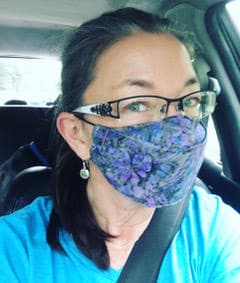 Most people know me for sewing things, but I also paint, draw, and I’m an illustrator by trade. My degree is actually a BFA in Medical Illustration. I was also a massage therapist, a birth doula, and health and wellness consultant for a few years while my children were very young. The two things I’ve always done at every stage in my life are fitness (and health-related things) and art. One is crazy active, and one is sitting still for many hours and staying focused on small details. They both keep me balanced, but they don’t necessarily pay the bills during a pandemic, that is for sure.
Most people know me for sewing things, but I also paint, draw, and I’m an illustrator by trade. My degree is actually a BFA in Medical Illustration. I was also a massage therapist, a birth doula, and health and wellness consultant for a few years while my children were very young. The two things I’ve always done at every stage in my life are fitness (and health-related things) and art. One is crazy active, and one is sitting still for many hours and staying focused on small details. They both keep me balanced, but they don’t necessarily pay the bills during a pandemic, that is for sure.
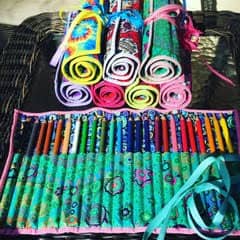 I do everything from dress alterations to making strange but useful things that you wouldn’t really think of, like roll-up cases for makeup brushes. I started making colored pencil and crayon roll-up cases too, because I was tired of seeing my kids’ pencils and crayons roll around everywhere. I have four kids, and while my two boys were playing sports, the girls would bring their crayons, and they would roll down the bleachers. A lot of things I make are utilitarian, but I’m an artist, so they have to be beautiful.
I do everything from dress alterations to making strange but useful things that you wouldn’t really think of, like roll-up cases for makeup brushes. I started making colored pencil and crayon roll-up cases too, because I was tired of seeing my kids’ pencils and crayons roll around everywhere. I have four kids, and while my two boys were playing sports, the girls would bring their crayons, and they would roll down the bleachers. A lot of things I make are utilitarian, but I’m an artist, so they have to be beautiful.
I also enjoy giving back to the community. Bonny, my friend and business partner, and I have done lots of things over the years, such as coordinate a monthly gathering of artists, hobbyists, and like-minded people to “sit, share, and work” on our projects while hanging out for a few hours the first Sunday of each month in downtown Pittsboro. The pandemic has halted that, but we hope to have it be a thing we resume soon.
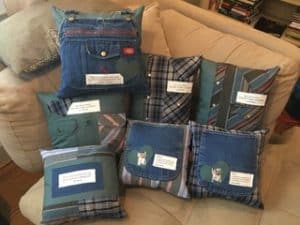 We’ve helped make and collect quilts for the local hospice, showed people how to make pillowcases to go to the kids at UNC Children’s Hospital, as well as baby quilts for the NICU, and quilted kennel comforters for the pets at the local animal shelter. We’ve collected donated wedding dresses to be made into angel gowns for the babies who didn’t survive birth at local hospitals. I’ve also made and donated key wrist lanyards to Chatham Habitat for Humanity to give to new homeowners that are adorned with cute little house fabric. Around the holidays, I try to give anything left from my stash to kids in need in the county. We really do enjoy giving back. It’s part of my being.
We’ve helped make and collect quilts for the local hospice, showed people how to make pillowcases to go to the kids at UNC Children’s Hospital, as well as baby quilts for the NICU, and quilted kennel comforters for the pets at the local animal shelter. We’ve collected donated wedding dresses to be made into angel gowns for the babies who didn’t survive birth at local hospitals. I’ve also made and donated key wrist lanyards to Chatham Habitat for Humanity to give to new homeowners that are adorned with cute little house fabric. Around the holidays, I try to give anything left from my stash to kids in need in the county. We really do enjoy giving back. It’s part of my being.
What types of art did you make when you were growing up?
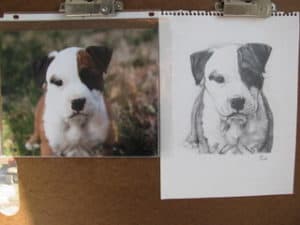 When I was a kid, I would draw all the time. I don’t remember if I painted, but I definitely drew a lot with colored pencils, crayons . . . whatever I could get my hands on. I was always creating things. My mom was the one who taught me how to sew. It was some time between elementary and middle school when I started getting lost in my art. Lunch, recess, and art — those were the only things I really cared about. I really bonded with the art teachers. They became mentors for me, even through high school. The hours spent in their classrooms helped increase my skill as an artist by doing things over and over again. I also learned valuable life skills from my mentors.
When I was a kid, I would draw all the time. I don’t remember if I painted, but I definitely drew a lot with colored pencils, crayons . . . whatever I could get my hands on. I was always creating things. My mom was the one who taught me how to sew. It was some time between elementary and middle school when I started getting lost in my art. Lunch, recess, and art — those were the only things I really cared about. I really bonded with the art teachers. They became mentors for me, even through high school. The hours spent in their classrooms helped increase my skill as an artist by doing things over and over again. I also learned valuable life skills from my mentors.
After high school, I went to college at SUNY Geneseo in upstate New York because that’s all we could afford. The art program there was not very strong so I transferred to Rochester Institute of Technology (RIT), which had a stronger art program and more educational opportunities overall. After the first year at RIT, I knew that I really liked graphic design, but there were so many people in the field that I was nervous to go into it. I discovered that medical illustration had far fewer students, and at the time, it was the highest paying art field. So I graduated with a degree in medical illustration because I didn’t want my father’s words to come true: “artists don’t make much money.” But after I graduated, I realized it wasn’t really what I wanted to do, so I moved to Pennsylvania and took a job working as a graphic designer for a publishing company called Rodale Press. I worked there for about eleven years. I was paid for my attention to detail, but the art side, not so much. I craved more creative expression and autonomy. In 1999, I took a leap, quit my corporate job, and chose independence by starting a path of self-employment as an artist.
I met my husband while working up in Pennsylvania. We got married and started having children, then moved down here to Chatham County in 2006. I dabbled in different jobs over the years, but needed to find a balance between raising kids and making money doing something I loved. I found that balance in being an artist and a fitness instructor. I became a licensed Zumba Fitness instructor in 2012. Neither of these careers make a lot of money, but my mental health was more important than making big money. We are far from rich, but we’re happy, and I totally love what I do.
Have you ever had people out to your studio to see your artwork?
No, I live way out in the country in Silk Hope. My studio is my dining room, which is about a 10’ by 10’ space with floor-to-ceiling shelving, three sewing machines, an iron, and a work desk, all in one very small and packed space. There are six people in my house and some pets too, so it’s not like it’s a studio space that would easily accommodate visitors without disrupting the household. One day I would love to have a space to welcome visitors, though.
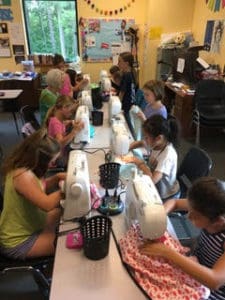 But also I do so many different types of art that I’m not known for. Some people know me because of my masks, then someone else might know me for something else, like teaching sewing or quilting classes, or altering prom dresses, or making memory pillows to remember loved ones who are no longer with us. Of all the things I do, I really enjoy teaching because not many people know how to sew, and I can teach anyone to sew. Anyone! I get to interact with people and see them learn, grow, and feel proud of a new skill they acquired. I started out teaching out of my home, and later taught at Habitat for Humanity in Pittsboro when they offered me some space to teach quilting and sewing classes for adults. I also taught sewing classes for kids at Woods Charter over the summers.
But also I do so many different types of art that I’m not known for. Some people know me because of my masks, then someone else might know me for something else, like teaching sewing or quilting classes, or altering prom dresses, or making memory pillows to remember loved ones who are no longer with us. Of all the things I do, I really enjoy teaching because not many people know how to sew, and I can teach anyone to sew. Anyone! I get to interact with people and see them learn, grow, and feel proud of a new skill they acquired. I started out teaching out of my home, and later taught at Habitat for Humanity in Pittsboro when they offered me some space to teach quilting and sewing classes for adults. I also taught sewing classes for kids at Woods Charter over the summers.
I do my art for my own therapy. It feels very relaxing, and it takes away the stress of 2020. But I really enjoy the teaching side. I love teaching people how to sew, how to operate a sewing machine, how to pick out color combinations for their projects, how to pin and iron correctly to get the end result they want, and shortcuts and tips. I love sharing those.
How did you get into quilting?
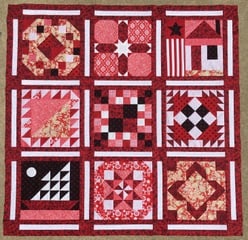 When I first learned how to sew, I learned how to follow a pattern and how to make little things. I was creative with my art, but I wasn’t necessarily creative with sewing because I felt like you had to follow the pattern to get the same results. I didn’t get creative with quilting until college. But when I was there, I hid sewing because it was considered an old-fashioned thing. If I didn’t go out at night, I was unveiling my sewing machine and doing little projects. But it wasn’t until I worked for Rodale that I really started quilting. In that environment it was a valued thing, and I enjoyed being open with my love of it.
When I first learned how to sew, I learned how to follow a pattern and how to make little things. I was creative with my art, but I wasn’t necessarily creative with sewing because I felt like you had to follow the pattern to get the same results. I didn’t get creative with quilting until college. But when I was there, I hid sewing because it was considered an old-fashioned thing. If I didn’t go out at night, I was unveiling my sewing machine and doing little projects. But it wasn’t until I worked for Rodale that I really started quilting. In that environment it was a valued thing, and I enjoyed being open with my love of it.
I was one of two young people fresh out of college who knew how to lay out books and magazines on a computer. So while I was laying out the quilting books, I was reading what I was putting on the screen. Between the pictures and the words, I was learning the basics of quilting, by just doing my job. The company offered a free lunch-and-learn where you could go and learn how to quilt. There were all these very dignified editors carrying their little baskets with really high-end supplies. I just showed up one day, and they taught me how to quilt. I lived alone, I didn’t have a boyfriend at the time, and I didn’t go out much. So I did a lot of quilting. Then I ended up teaching in small groups in my home. Young people that were my age didn’t want to go to a quilt shop and feel embarrassed or inferior. They wanted to learn from someone their own age, so they asked me to teach them.
I’m a big Type A firstborn, so I’m very good at procrastination and perfectionism, which can be very paralyzing. So when I can make it all the way through a quilt and get to the binding part, it’s like checking something off. There are parts of quilting that I love, and there are parts of it I’m not so great at, but it’s very therapeutic because it follows a set of steps. You always pick out your fabric, cut it into pieces, sew it back together, layer it up, quilt it, and bind it. It’s always the same process, regardless of whether you make traditional quilts or you’re an art quilter.
Do you gravitate toward a certain style of quilt?
I like things that are super bright and colorful. A lot of the students who took classes with me would say, “Well, my colors aren’t quite like your colors, but your work is really good.” That made me smile. We all have different styles and that’s ok. My quilts tend to be busy and very colorful.
I’ve even had one of my quilts in a quilt show. I don’t know what I was thinking. I was brand new. It was a grandmother’s flower-garden-style quilt, which took me almost three years to complete. I did all of the tiny hexagons by hand. Traditional flower gardens are often done in pastels, but mine was dark and moody, with African prints. It was really crazy. I didn’t expect to win; I just wanted to go through the process.
Are any of your kids artistic?
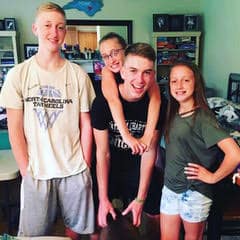 One of my kids is a perfectionist like me. When she does art, she gets angry at it. I have two more who are artistic, but they haven’t really fallen in love with it. I do have one child who is not very artistic; he’s very factual and linear in his thinking. He’s the opposite of me. Everything has to be a certain way. He struggled with art, big time. He hated the process. There was too much gray area that didn’t fit into his black and white world. But they’ve all taken art classes as electives in high school when they could have chosen something else. I knew it would be a potential therapy for them, too, so I recommended it as a more stress-free class elective.
One of my kids is a perfectionist like me. When she does art, she gets angry at it. I have two more who are artistic, but they haven’t really fallen in love with it. I do have one child who is not very artistic; he’s very factual and linear in his thinking. He’s the opposite of me. Everything has to be a certain way. He struggled with art, big time. He hated the process. There was too much gray area that didn’t fit into his black and white world. But they’ve all taken art classes as electives in high school when they could have chosen something else. I knew it would be a potential therapy for them, too, so I recommended it as a more stress-free class elective.
How has the pandemic affected your work?
When the pandemic hit, I lost a lot of in-person participants in the fitness classes I teach, and some classes were canceled due to low attendance or the fitness clubs shutting down. People who weren’t willing to come to an in-person class were willing to attend a virtual class, so I quickly learned how to use Zoom to continue to connect with those students. My class load dropped, as did the attendance. It was a very rough summer.
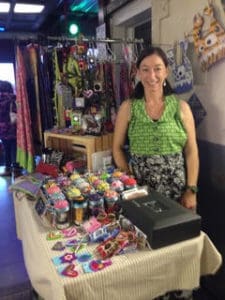 In terms of my artwork, normally I would work all year long to make things, and then I would go and sell them at local markets, such as the Pittsboro Fall Street Fair and the Saxapahaw Holiday Market. In years past, I would make more in those few days selling my wares then I would all year long. I also hemmed formal dresses for proms and weddings, but with everything canceling, I lost that income, too. In addition, all of my summer sewing camps for kids were canceled, which was a huge chunk of my yearly income. What’s really helped me to make it through the pandemic is selling masks.
In terms of my artwork, normally I would work all year long to make things, and then I would go and sell them at local markets, such as the Pittsboro Fall Street Fair and the Saxapahaw Holiday Market. In years past, I would make more in those few days selling my wares then I would all year long. I also hemmed formal dresses for proms and weddings, but with everything canceling, I lost that income, too. In addition, all of my summer sewing camps for kids were canceled, which was a huge chunk of my yearly income. What’s really helped me to make it through the pandemic is selling masks.
My husband is in catering. Needless to say, catering is not a great place to be in a pandemic when people can’t gather for weddings and business events, so he’s been on unemployment for many months now. My mask making has filled the gaps of family income loss over the summer, but once we hit September, we didn’t know how we were going to survive. But then I heard about the Chatham Arts Council’s pandemic support program for artists who live and work in Chatham County. After holding off as long as we could, then selling my in-stock art at a discount as a holiday sale, I went ahead and applied. I’m so incredibly grateful that I did, because it has seriously helped our family pay bills and feed our four teenagers. I’m forever grateful for the art-loving donors who have decided that the CAC is a worthy cause to support. I hope, one day, to be able to give back to help artists in Chatham County by donating to the CAC. It’s truly a worthy and effective distribution hub for local artists in need.
When you started making masks, had you ever made one before?
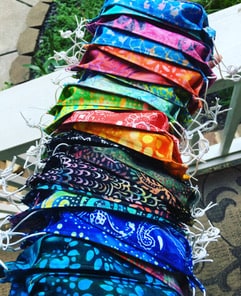 No, but I saw that there was a need, and all these people were throwing all of these patterns out there. But instead of jumping in right away, I took some time to do research on the best masks, designs, material, and how many layers were needed. I came up with a few, but my favorite was the batik one. Batik is so beautiful; it looks like someone has done a painting on a fabric. It’s more expensive than other fabrics, but it’s a very tightly woven yet breathable fabric, so it’s great for masks.
No, but I saw that there was a need, and all these people were throwing all of these patterns out there. But instead of jumping in right away, I took some time to do research on the best masks, designs, material, and how many layers were needed. I came up with a few, but my favorite was the batik one. Batik is so beautiful; it looks like someone has done a painting on a fabric. It’s more expensive than other fabrics, but it’s a very tightly woven yet breathable fabric, so it’s great for masks.
I’ve made close to a thousand masks since April. In the early days, anyone who was making masks was having supply issues. For a while, we couldn’t get elastic, or bias tape for ties, or the metal nose pieces. The mask makers were all contacting each other, trying to find out what each other was doing and where they were finding materials. It was a mad dash and a lot of frustration.
How does your love for art and your love for fitness intersect?
 There’s not really an intersection, but there always has to be a balance. There are times in my life where I’m focused more heavily on one side and lacking in the other, and I don’t feel good. If you do too many things, you don’t do anything really well. When it comes to these two hats, they need to be somewhat balanced. I find I need both fitness and art in my life to feel whole, healthy, and balanced. My family likes me the best when I have them both in my daily life.
There’s not really an intersection, but there always has to be a balance. There are times in my life where I’m focused more heavily on one side and lacking in the other, and I don’t feel good. If you do too many things, you don’t do anything really well. When it comes to these two hats, they need to be somewhat balanced. I find I need both fitness and art in my life to feel whole, healthy, and balanced. My family likes me the best when I have them both in my daily life.
What do you think the future holds for you?
My ultimate dream is to open a quilting, sewing, and knitting shop with my good friend Bonny, who has been dreaming about this with me for years. It would have a huge selection of fabrics, notions, and yarns, plus classes for all ages and ability levels. The one in Chapel Hill shut down a few years ago, so now you have to travel to Cary or Greensboro. There’s a need to fill and I’d like to help fill it. I would love it if it also had a space for local fiber artists to display and sell their artwork. It would be a place where people could go to be creative or to buy beautiful handmade gifts. I can see the shop fitting in really nicely in Pittsboro.
I would like it to be in an old house that has a big front porch so there can be rocking chairs and people can take their projects outside in the fresh air and sunshine and work on the porch. I see it as something that’s kind of traditional and homey, and perfect for Chatham County.
On top of all the yuck this year has brought to so many, in November I was diagnosed with breast cancer, and couldn’t continue to work in any capacity until I had surgery and went through treatment. I’m in the midst of that now. I told Bonny that I think it might be time for us to get the shop going. She’s been waiting patiently. She’s older than I am, and her kids have graduated high school. But I’m still driving two of my four children to and from school and dance classes, and all four teenagers still live at home. I think we just need to get through COVID, and then we can start looking at potential places again. It’s time. Life changing things like pandemics, health scares, and aging kind of have a way of shaking you and making you leap into your dreams.
I will say that even though this year has really been hard, I’m actually happy. I know that sounds weird. But I’m always the happiest when I’m doing both fitness and art. Although this year has challenged what my norm is in those two arenas, I’ve found ways to continue to do both…just differently. I have no doubt once I get through my treatment, I will jump back into what I love most and continue to find ways to give back to my community. It’s just part of my nature.
For more information about Tanja’s masks, other art work, or for information on her upcoming sewing classes, visit her on Facebook, Instagram, or email her at designsbytanja@gmail.com.
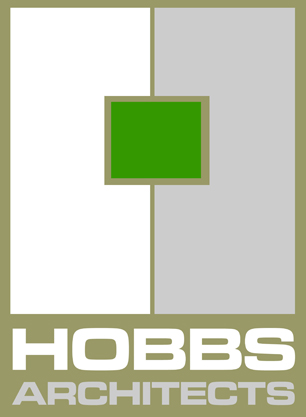
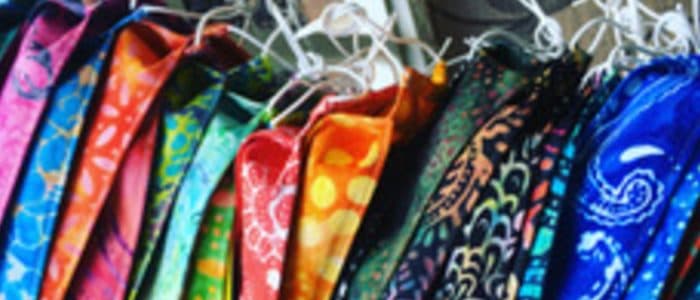
Thanks to the CAC for featuring art in its many forms. Thank you for featuring this artist, who is loved by so many in Chatham!